Menu
International Genealogical Index Sheets
According to GENUKI
“The I. G. I. is apparently the most-used index for family history research. It is available at many family history libraries and each Family History Centre operated by the Church of Jesus Christ of Latter Day Saints (hereafter referred to as: LDS). An online version can be found at: FamilySearch.org, the LDS Library web site.
However, there are several issues, pro and con, one should consider when using the I. G. I.:
Accuracy:
- The error rate has been estimated at around 10%.
- Corrections to the I. G. I. cannot be submitted. It is, after all, 100% accurate for its intended purpose – the ordination of ancestors claimed by LDS church members.
- Joan Van Daalen tells us that corrections to the I. G. I. can be made if they regard a personal entry. Her marriage was listed with the date off by 100 years, so she wrote and documented the correction. It was made within two months.
Content:
- The I. G. I. contains entries submitted by members of the LDS for ordinance of their ancestors in accordance with church beliefs. No verification of source information was required for the bulk of those entries. Guesses as to dates, places and relationships may not be substantiated. Entries prior to 1970 are often considered less reliable than subsequent years.
- The majority of the I. G. I. are entries submitted by volunteers working as part of the controlled extraction programme. The LDS church employed photographers to visit archives and other repositories to photograph various parish registers and other documents. Volunteers keyed these entries into the I.G.I. and they are identified in the last column by having the prefix of a letter before the numerical reference.
- The I. G. I. contains primarily baptism (often confused with “christening”) and marriage entries. Baptism is the ritual washing away of sin and acceptance into the Christian faith. Christening is the naming of the baby and acceptance into the local Christian community. Typically, both happen at the same time, but they can be years apart.
- Marriages do not indicate if the bride or groom is single, a widow or a widower. Witnesses are not recorded. Marriages do not show name of the parish in which the bride or groom were living prior to the marriage, although a parish register normally records if either was from another parish.
- Few death or burial entries are recorded, and where they are, the age at death is not noted.
- Illegitimate births do not always show the name of the father, even if recorded in a parish register.
- There are virtually no entries in the I. G. I. from Jewish, Catholic or other “non-conformist” church registers for Lincolnshire. Some counties do include non-conformist records, but most do not.
- Some entries, according to Charles Fuller, have non-existent church names.
- Some entries, according to Bernard Kettlewell, have the wrong parish listed.
- Many entries were made from the Bishop’s Transcript copies, not the original parish registers. Thus transcription errors, omissions, missing copies, etc. can mean that the data you seek may not be found.
- For details on how the IGI has been compiled, contact the LDS Genealogical Office at Garrets Green in Birmingham.
1992 Revisions:
- Prior to 1992, the I. G. I. included baptism and marriage entries extracted from parish registers. Not all the parishes were extracted, so the I.G.I. isn’t 100% complete. These entries were double or triple-checked for accuracy before entry.
- The extraction process requires two volunteers. Each filled out a card with the data they have read from the film. If the two cards differ, both were discarded. It is possible that the entry may never have been re-extracted.
- In 1992, the church decided to remove entries that were not for the ordinance of members’ ancestors. In the minds of many, this increases the error factor since parish register entries were removed if not tied to an ordination. Also removed were family tree inputs from non-members. The church removed the parish register entries to include them in future editions of the V. R. I. (Vital Records Index).
- Family History Centres were instructed to destroy any I. G. I. prior to 1992. If you want one from 1988 or earlier, try your local community library, record office or local studies library. However many of these are unaware of the change in church policy and have also discarded their earlier editions thinking that the 1992 contains all the old data plus updates.
- The V. R. I. (Vital Records Index) mentioned above includes parishes not recorded in the I. G. I. The first edition of the V. R. I. had over 5 million entries from 1538 – 1888 on 5 CDs, and the entries were only for British sources (the index is sometimes listed as the BVRI or British Vital Records Index). The vast majority of these entries are baptisms and marriages. The index is available on CD-ROM from FamilySearch.com
- There is a useful, 28-page booklet, “Making the Most of the I.G.I.”, by Eve McLaughlin, 1994. Most LDS Family History Centres have a shorter printed introduction to the I. G. I. available for patrons.”
- All
- Pridmore
- O'Hara
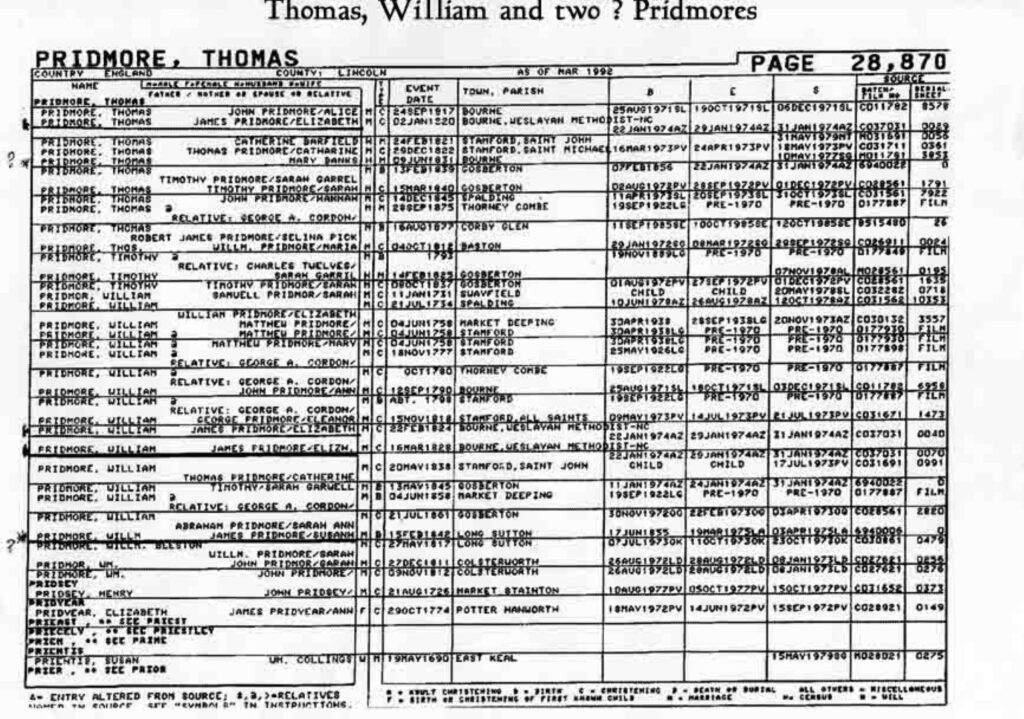 Thomas William and two unknown Pridmores IGI sheets
Thomas William and two unknown Pridmores IGI sheets
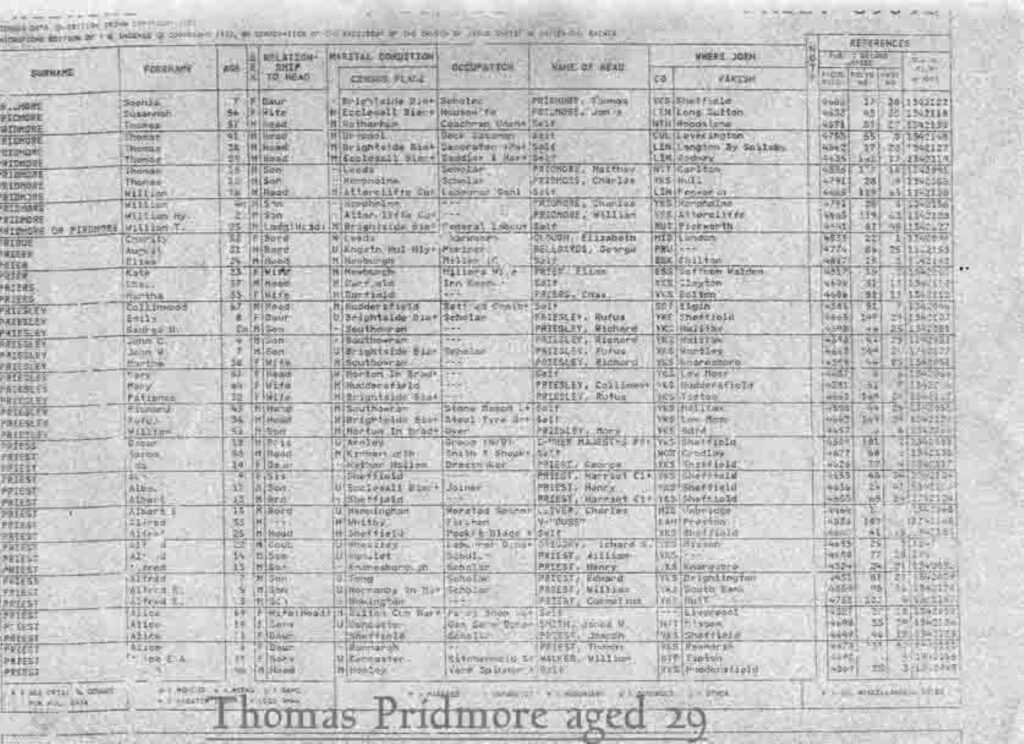 Thomas Pridmore IGI sheets
Thomas Pridmore IGI sheets
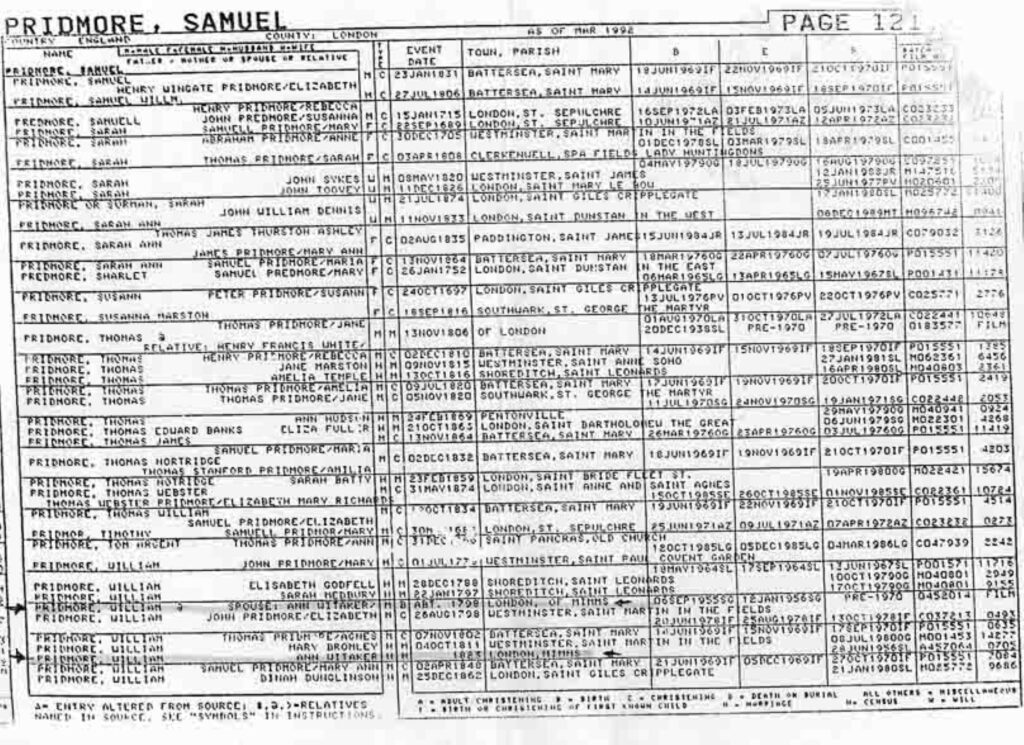 Samuel to William Pridmore IGI sheets London
Samuel to William Pridmore IGI sheets London
 Temprells IGI sheets 1
Temprells IGI sheets 1
 Rutland Pridmores IGI sheets 6
Rutland Pridmores IGI sheets 6
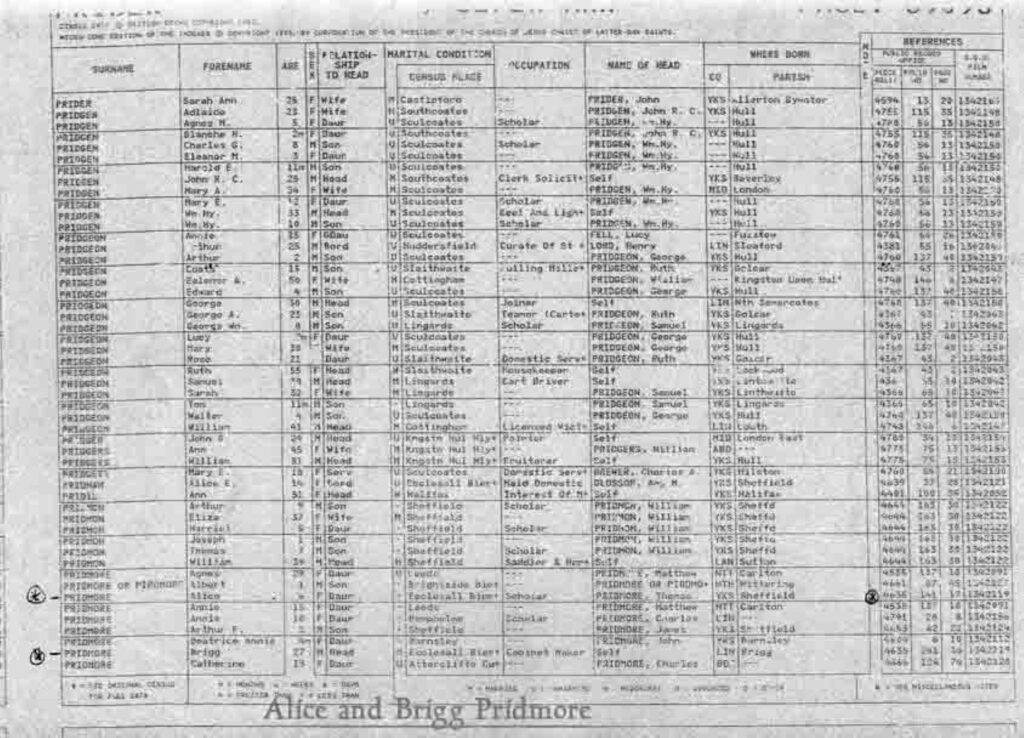 Alice and Brigg Pridmore IGI sheets
Alice and Brigg Pridmore IGI sheets
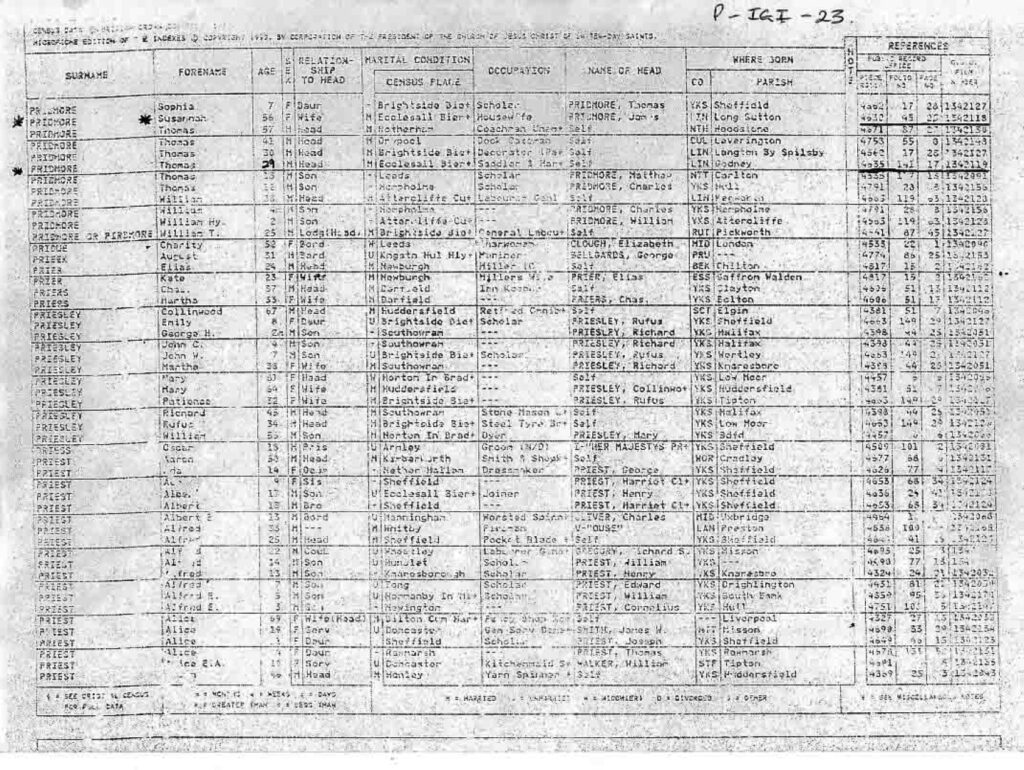 Susannah and Thomas Pridmore IGI sheets Sheffield
Susannah and Thomas Pridmore IGI sheets Sheffield
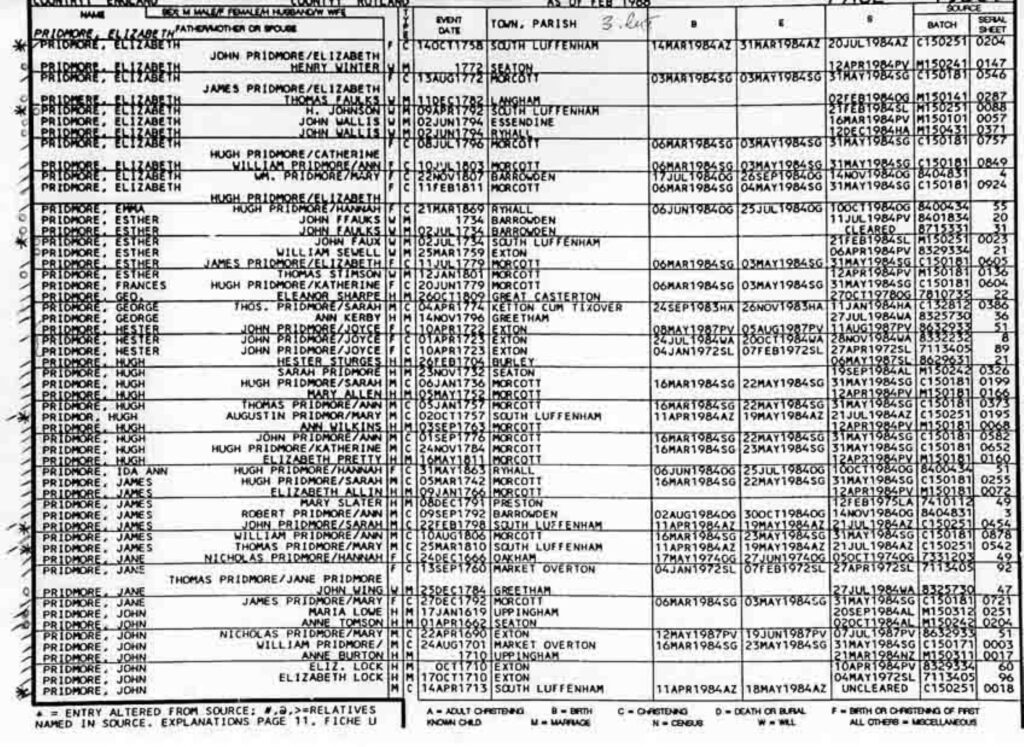 Rutland Pridmores IGI sheets 3
Rutland Pridmores IGI sheets 3
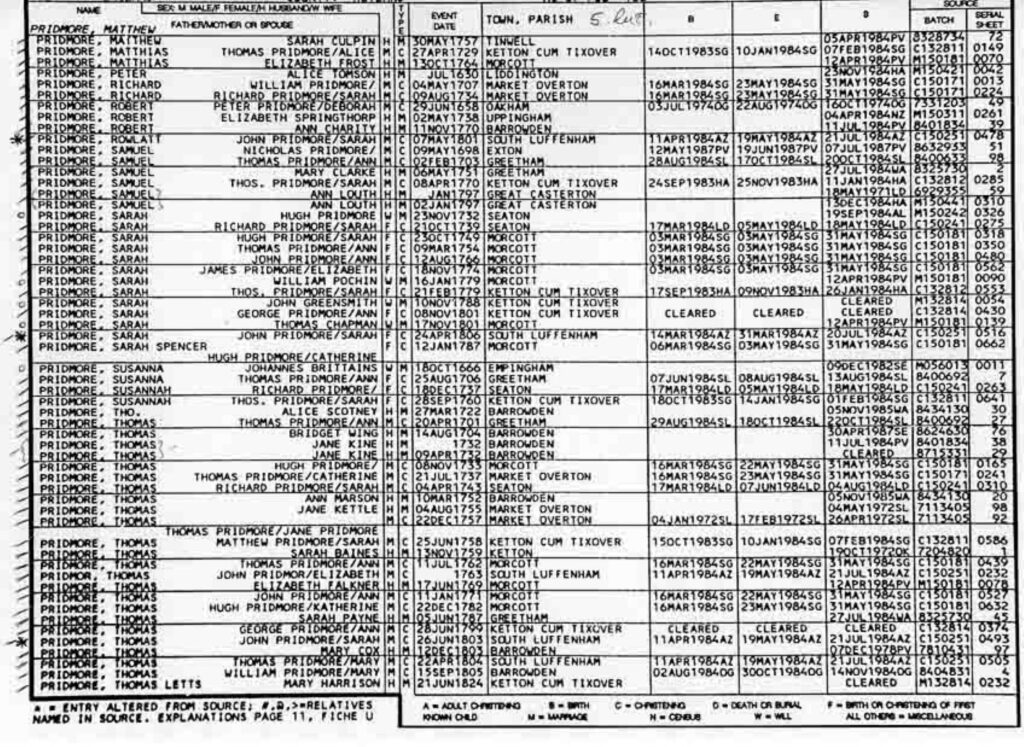 Rutland Pridmores IGI sheets 5
Rutland Pridmores IGI sheets 5
 Temprells IGI sheets2
Temprells IGI sheets2
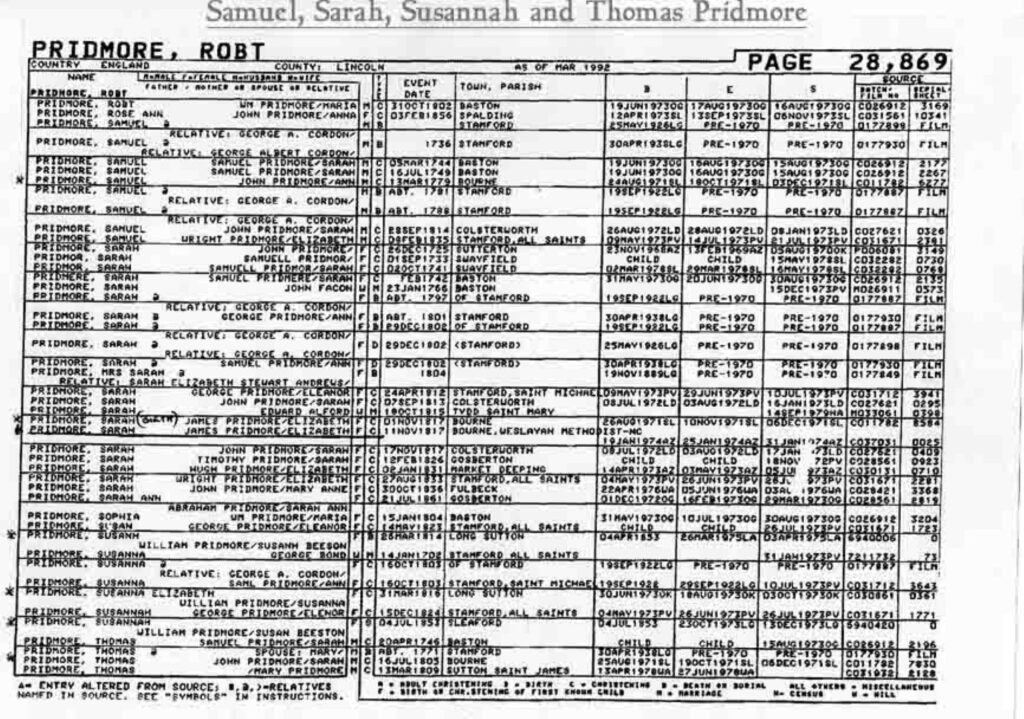 Samuel Sarah Susannah and Thomas Pridmore IGI sheets
Samuel Sarah Susannah and Thomas Pridmore IGI sheets
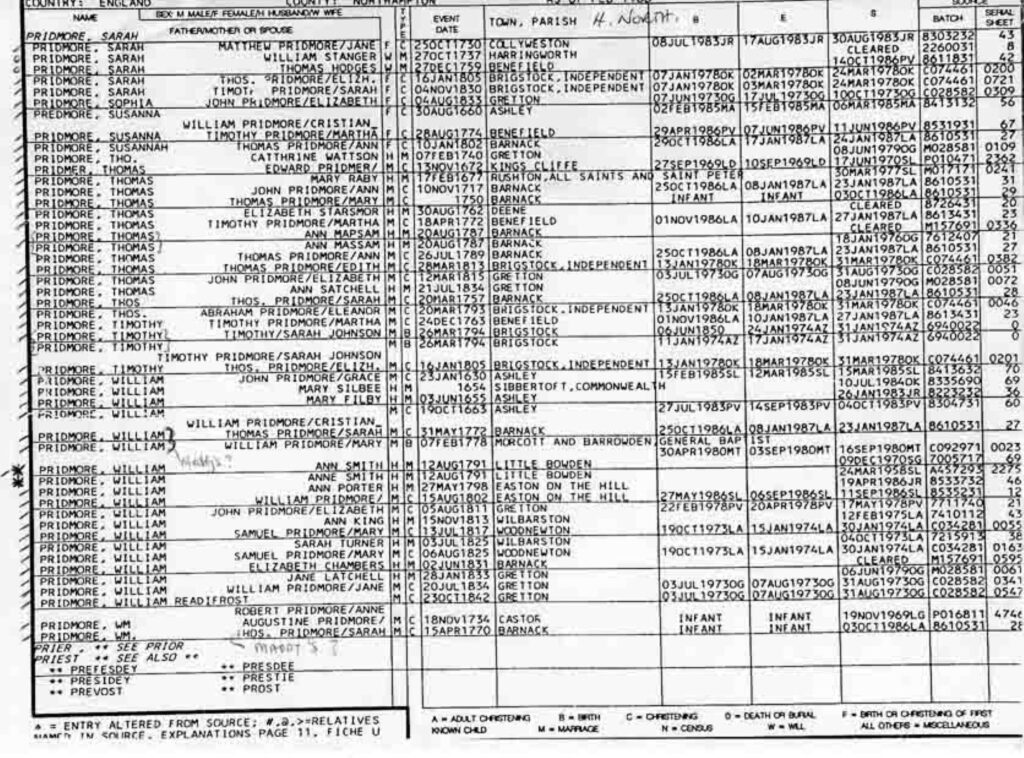 Northamptonshire Pridmores IGI sheets 3
Northamptonshire Pridmores IGI sheets 3
 O’Briens S IGI sheets
O’Briens S IGI sheets
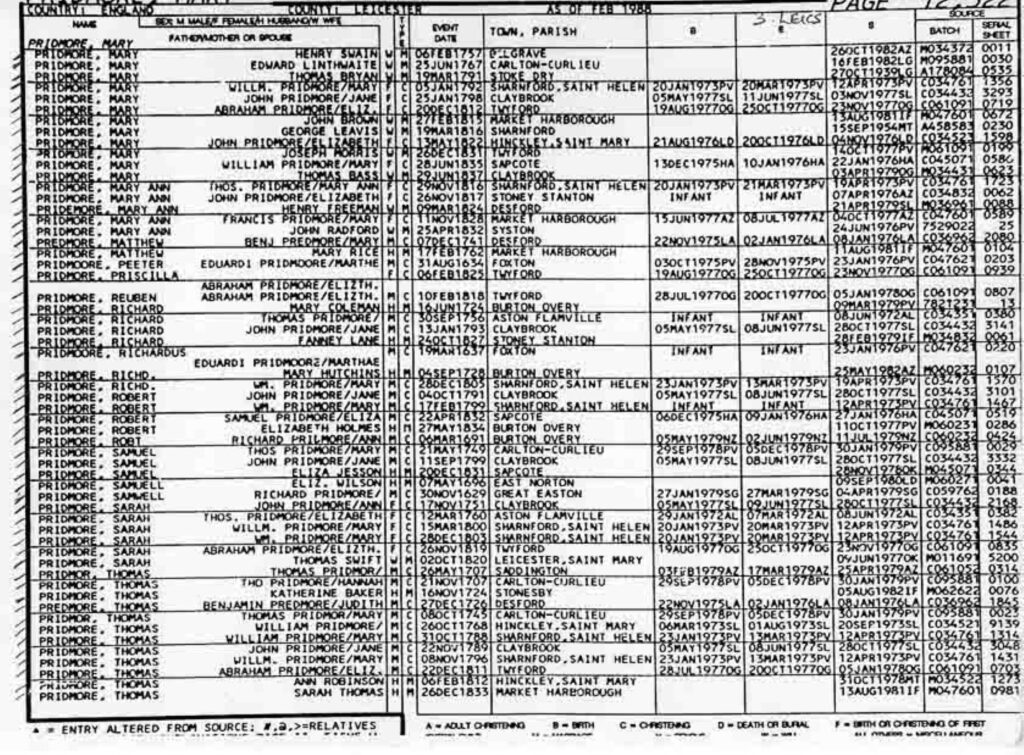 Leicestershire Pridmores IGI sheets 3
Leicestershire Pridmores IGI sheets 3
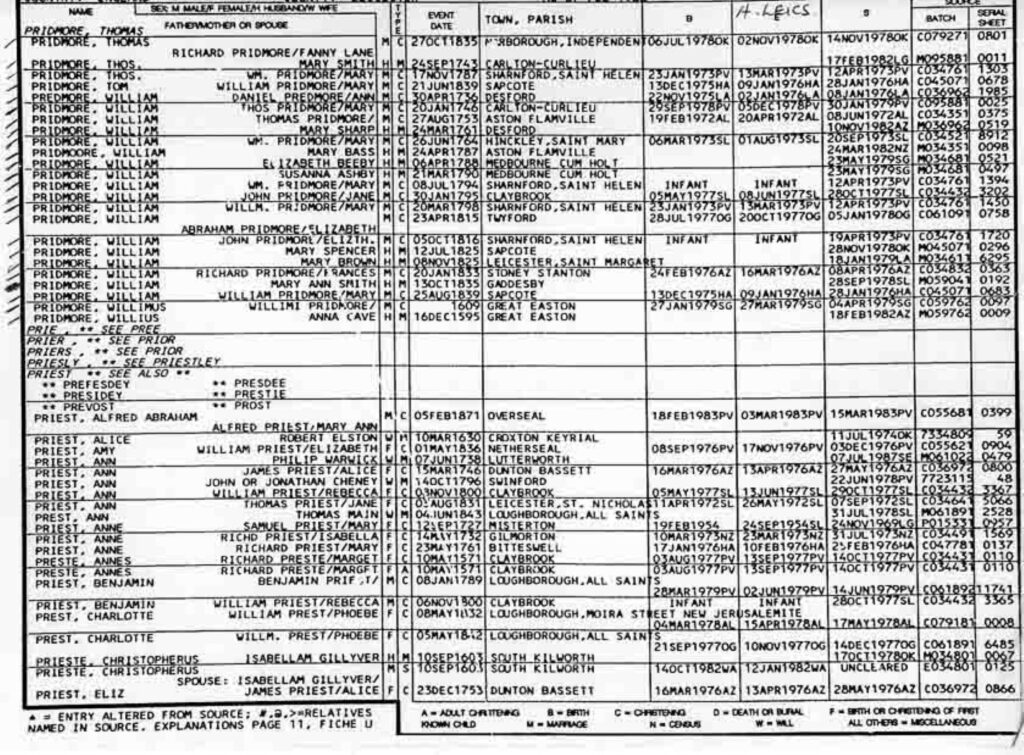 Leicestershire Pridmores IGI sheets 4
Leicestershire Pridmores IGI sheets 4
 Rutland Pridmores IGI sheets 1
Rutland Pridmores IGI sheets 1
 O’Briens N IGI sheets
O’Briens N IGI sheets
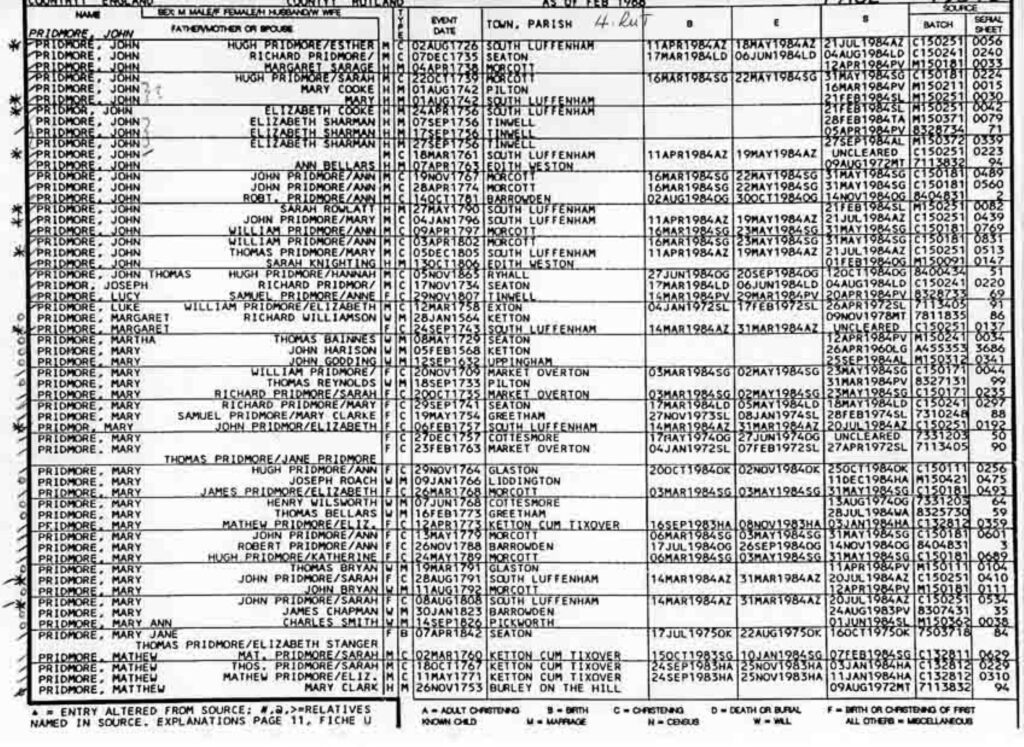 Rutland Pridmores IGI sheets 4
Rutland Pridmores IGI sheets 4
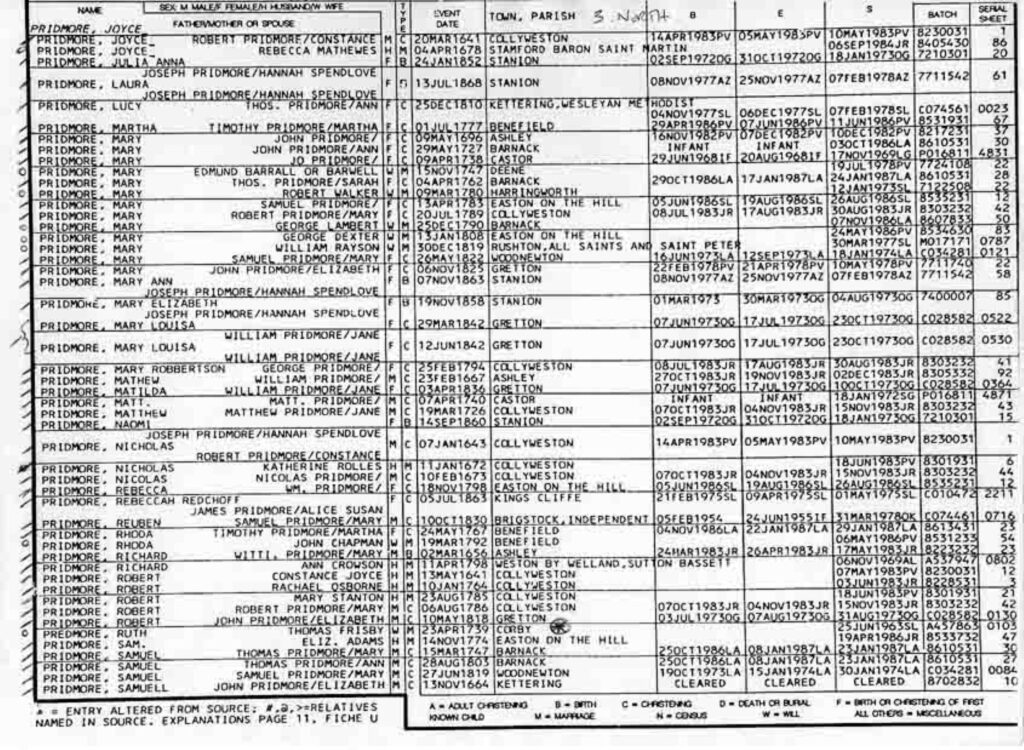 Northamptonshire Pridmores IGI sheets 2
Northamptonshire Pridmores IGI sheets 2
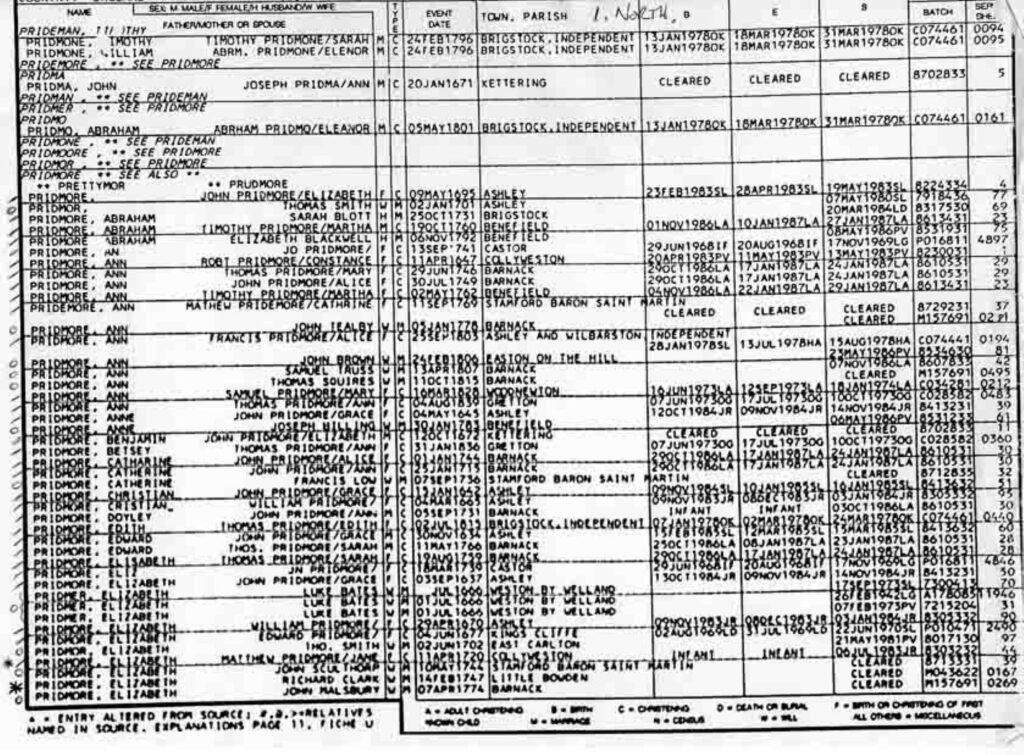 Northamptonshire Pridmores IGI sheets 4
Northamptonshire Pridmores IGI sheets 4
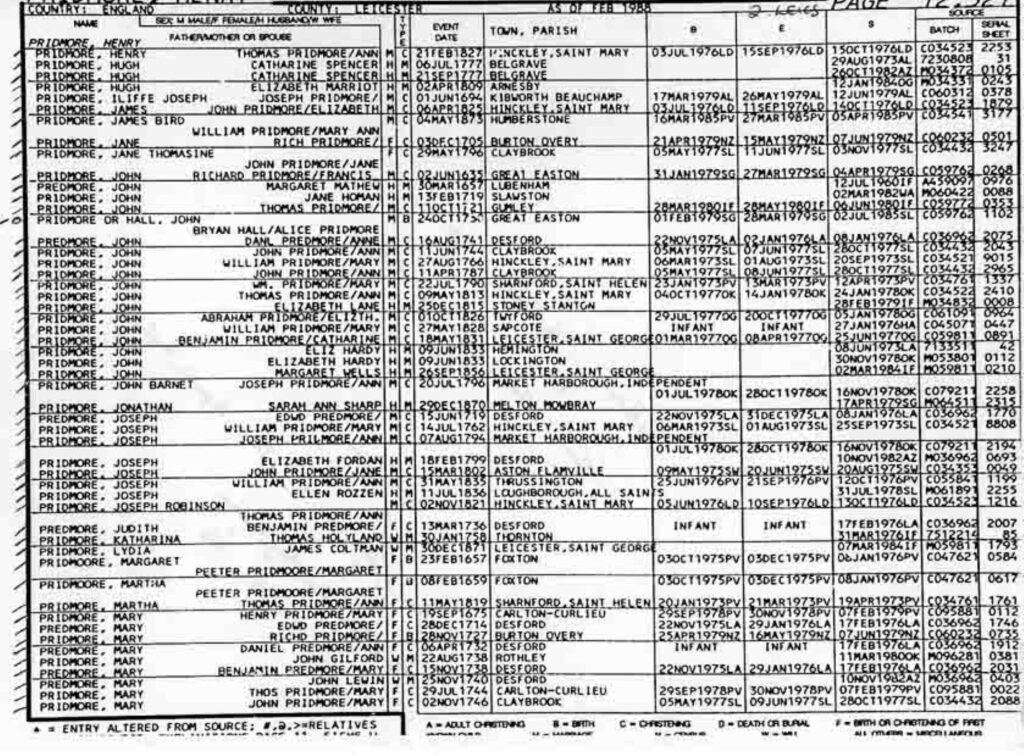 Leicestershire Pridmores IGI sheets 2
Leicestershire Pridmores IGI sheets 2
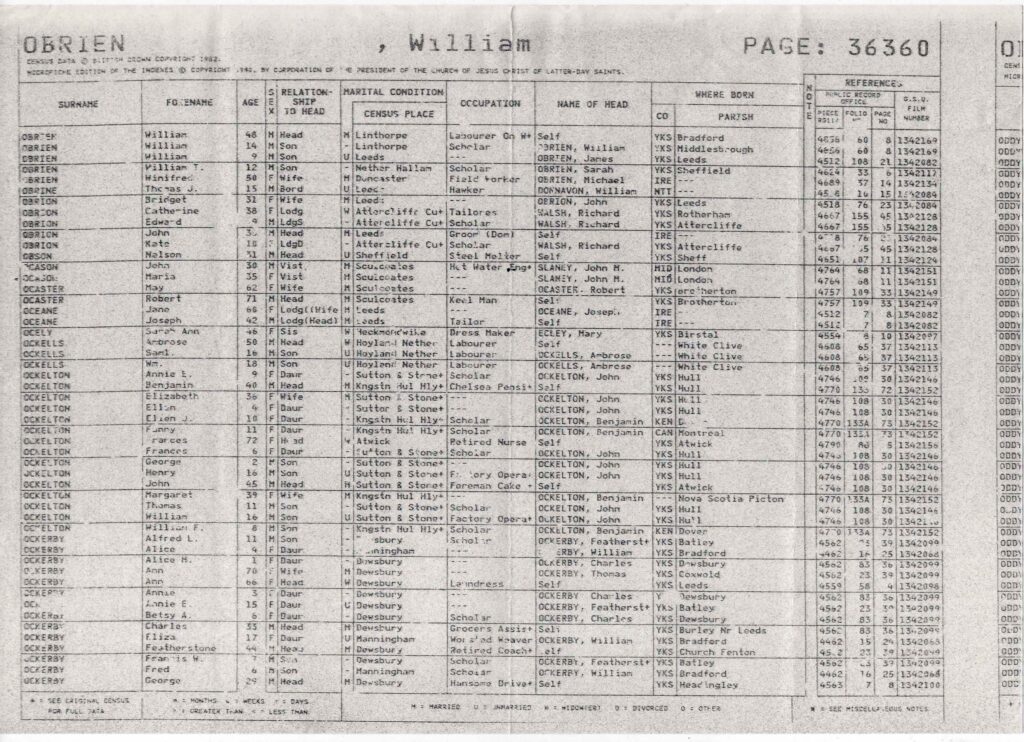 O’Briens W IGI sheets
O’Briens W IGI sheets
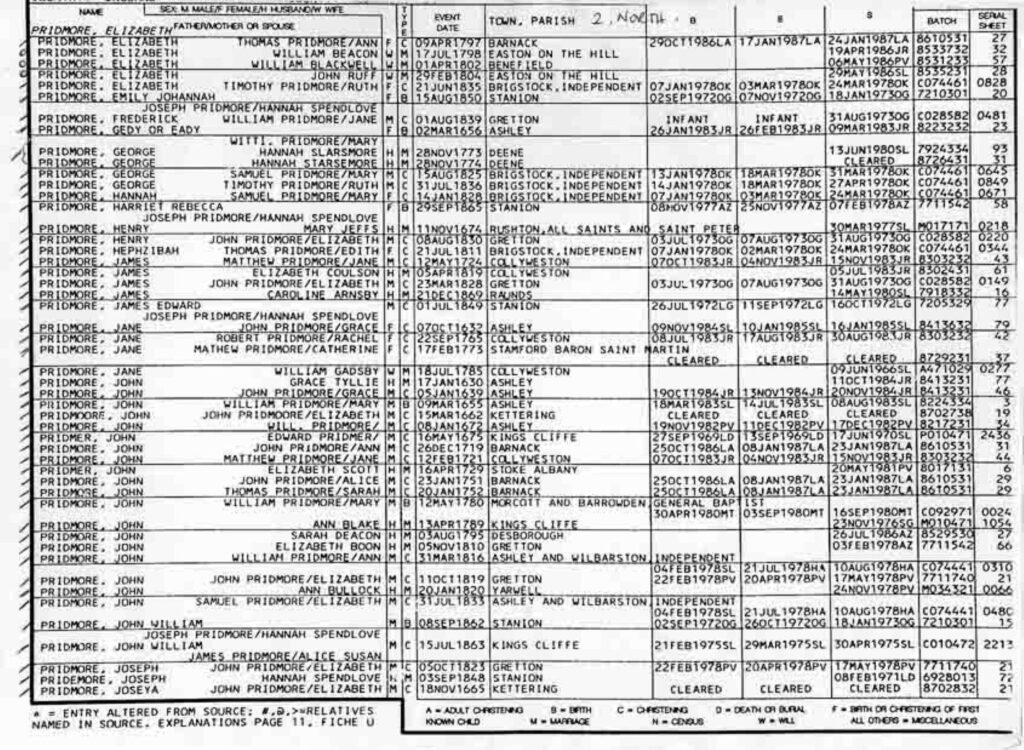 Northamptonshire Pridmores IGI sheets 1
Northamptonshire Pridmores IGI sheets 1
 James to Robert Pridmore IGI sheets
James to Robert Pridmore IGI sheets
 Rutland Pridmores IGI sheets 2
Rutland Pridmores IGI sheets 2
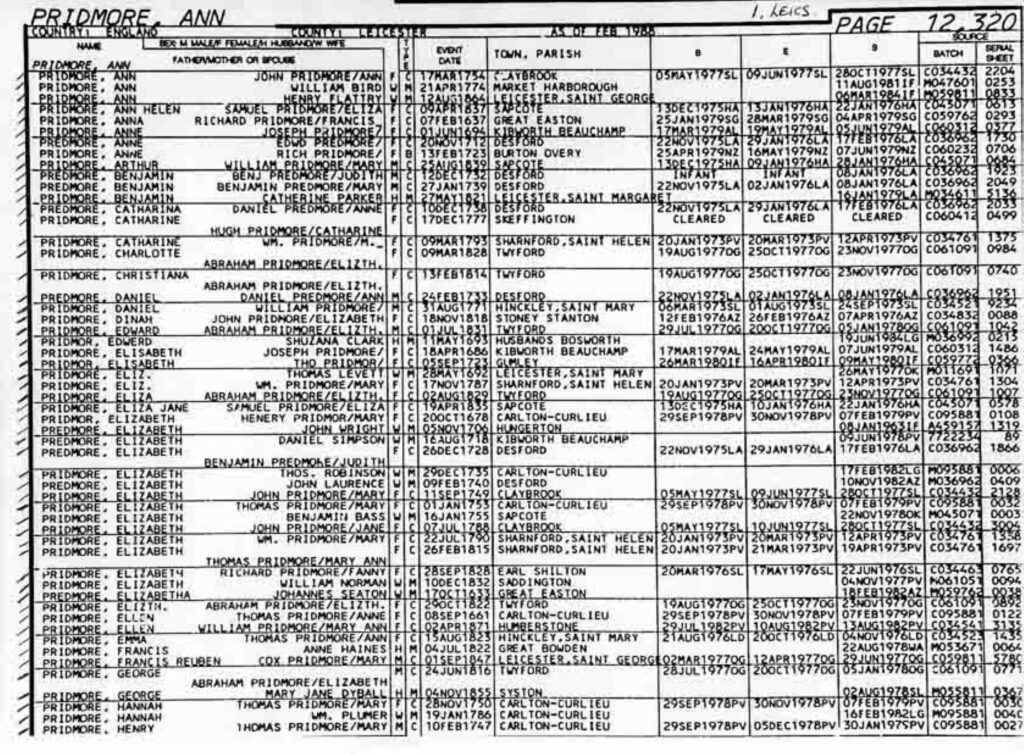 Leicestershire Pridmores IGI sheets 1
Leicestershire Pridmores IGI sheets 1
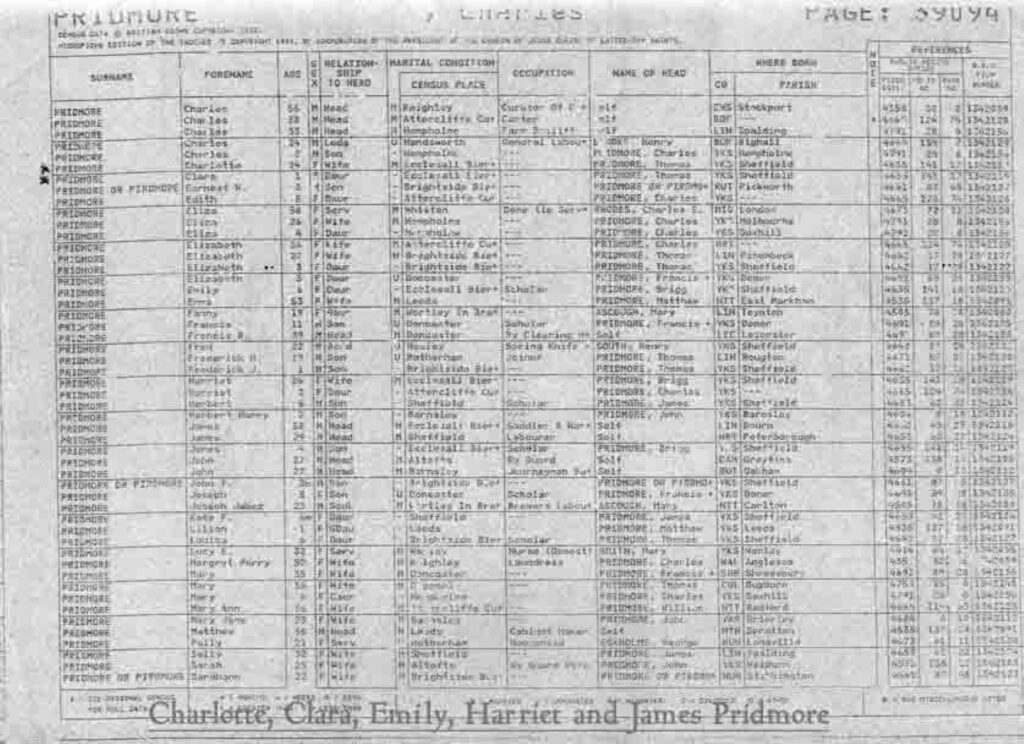 Charlotte Harriet James James and Clara Pridmore IGI sheets
Charlotte Harriet James James and Clara Pridmore IGI sheets
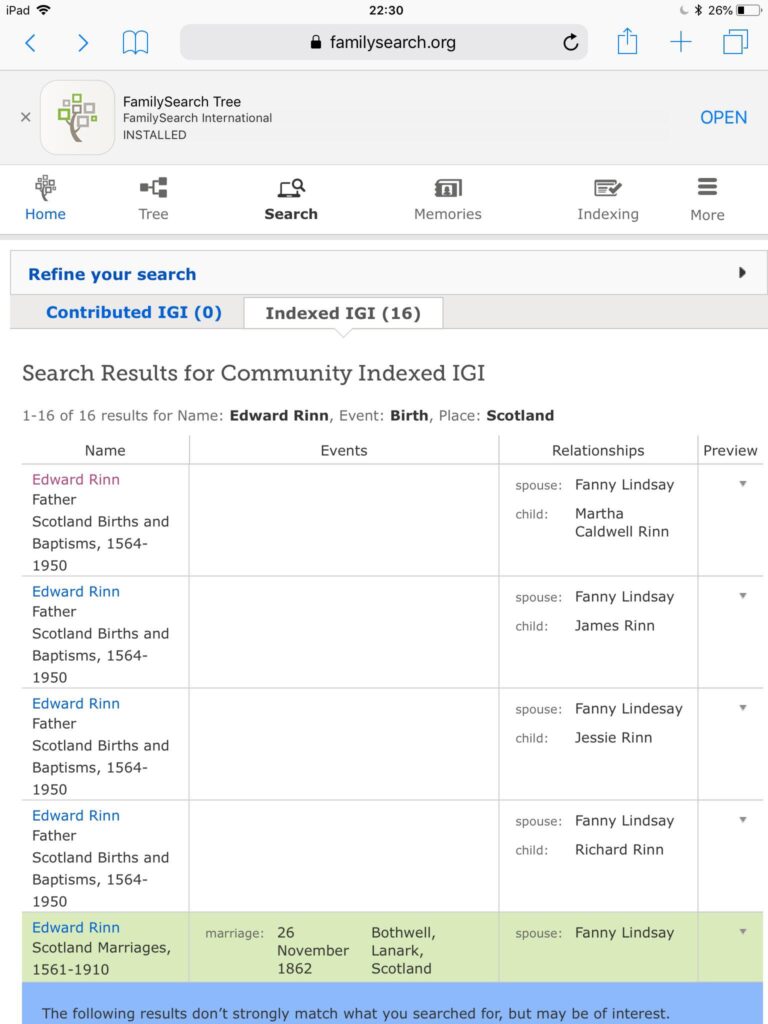 Edward Rinn and Mary McPake IGI sheets
Edward Rinn and Mary McPake IGI sheets
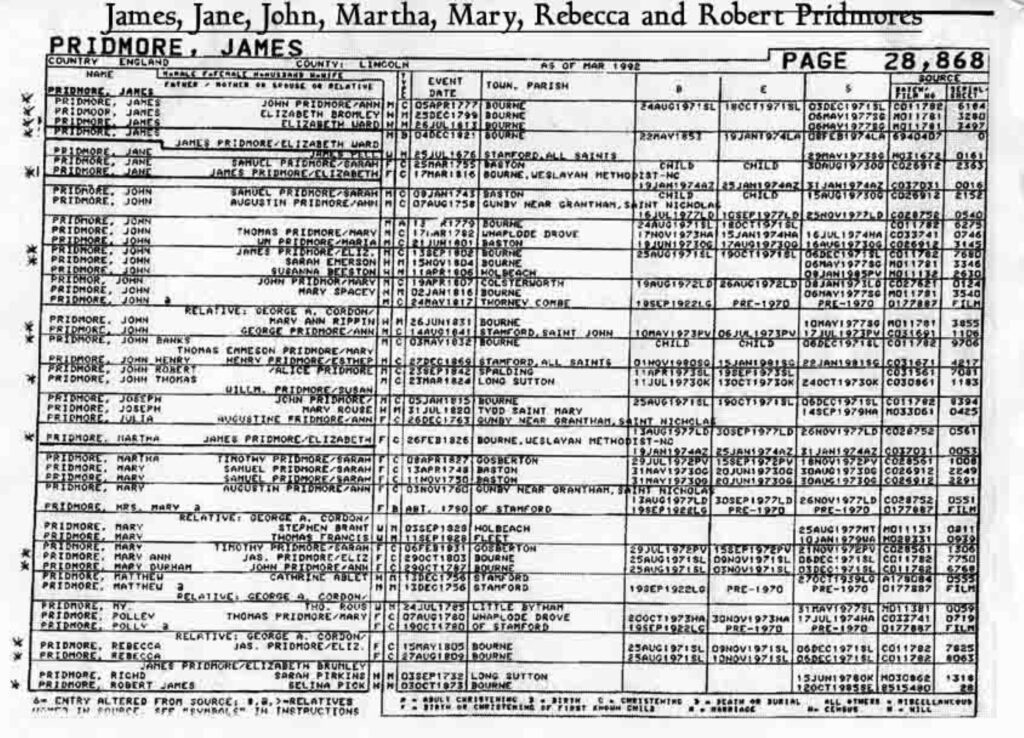 James Jane John Martha Mary Rebecca Robert Pridmore IGI sheets
James Jane John Martha Mary Rebecca Robert Pridmore IGI sheets
 Elizabeth George Hannah Henry and Isabella Pridmore IGI sheets
Elizabeth George Hannah Henry and Isabella Pridmore IGI sheets
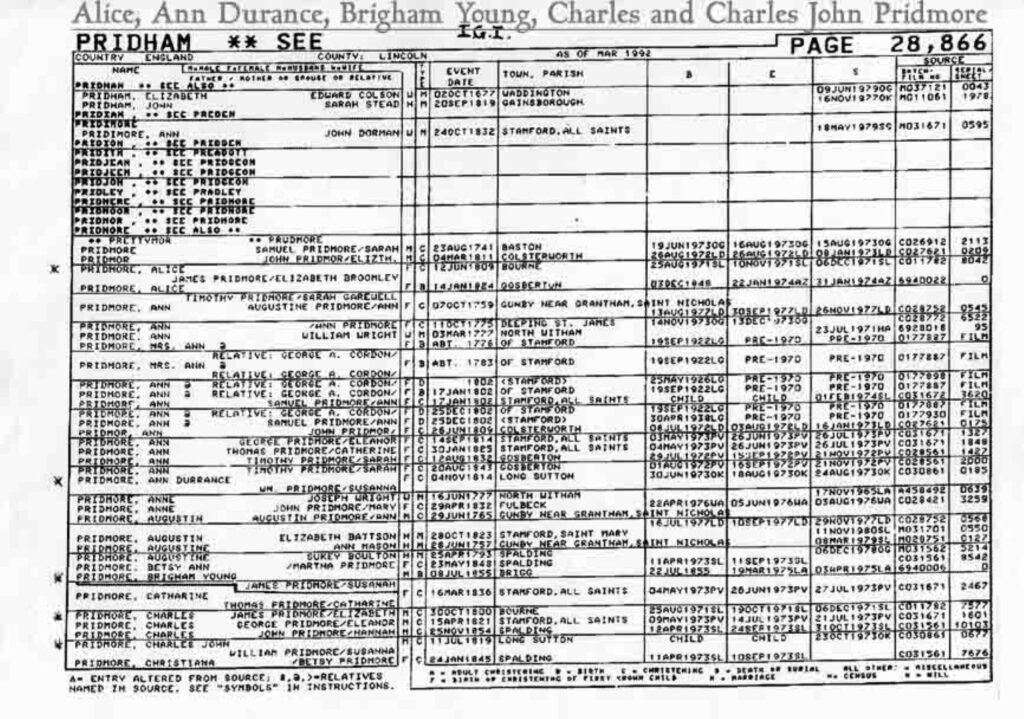 Alice Ann Durance Brigham Charles and Charles John Pridmore IGI sheets
Alice Ann Durance Brigham Charles and Charles John Pridmore IGI sheets
Click on an image to expand it

More Census Pages
Below are links to the other census pages in our tree.

Menu
Copyright
Copyright Chris and Jill O’Hara 2022


